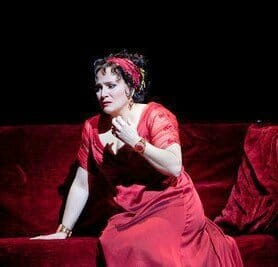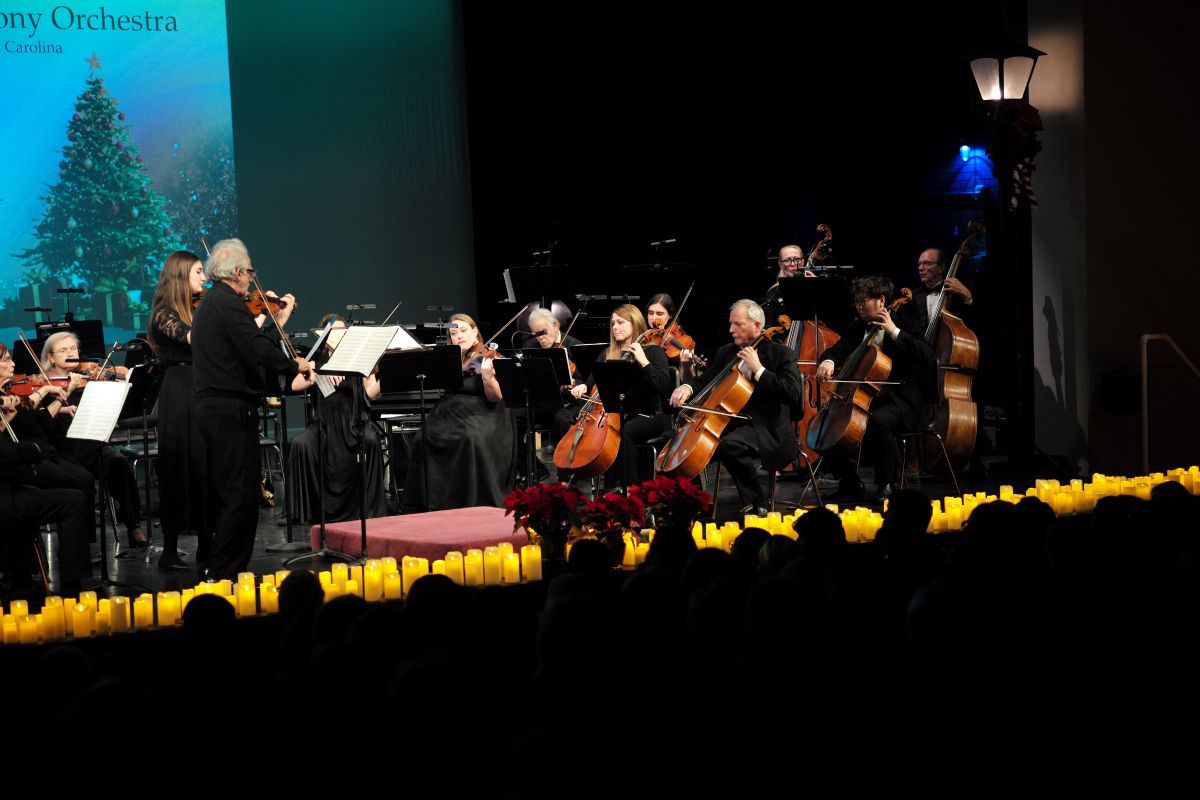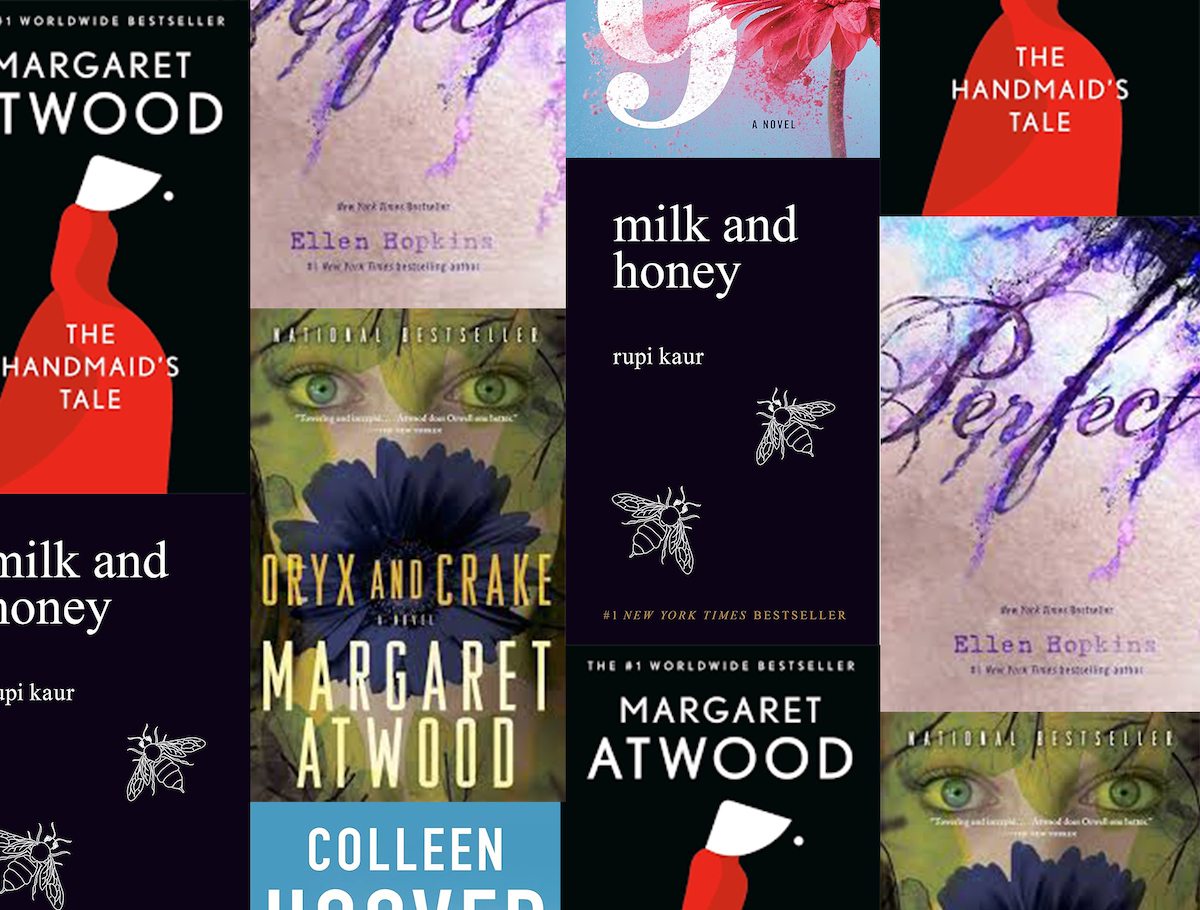By Alan Schuster
Puccini’s “Tosca” by The Met Opera will be live in HD at the USCB Center For the Arts on Saturday, Nov. 9 at 12:55 p.m.
If you’re prepared to accept “a savage assault on the emotions” as one opera commentator described it, then “Tosca” will rivet your attention from its brutal opening chords to its final bars when Tosca leaps to her death. In fact, when Puccini began composing it, he decided that while his first masterpiece “La

Boheme” was all poetry and no action, “Tosca” would be all action and no poetry. And so it is.
Act I: The Church of Sant’Andrea, Rome, 1800. Artist Mario Cavaradossi is working on a painting of the Madonna when Angelotti, an escaped political prisoner, enters. Mario, his friend, agrees to help him seek asylum. Floria Tosca, a famous opera singer and Mario’s lover, arrives and soon becomes suspicious when she recognizes the face of the Marchesa Attavanti (Angelotti’s sister) in the painting. He gently soothes her jealousy, and they agree to meet later that evening. After she leaves, Mario rushes away with Angelotti. A cannon is heard, signaling Angelotti’s escape, and the arrival of Rome’s ruthless chief of police, Baron Scarpia. He discovers the Marchesa’s fan, and believes that Angelotti has fled with the artist. When Tosca returns, Scarpia taunts her with the fan, rousing her suspicions once again. Now convinced that she has been betrayed, she departs to confront Mario. As Scarpia orders his agent, Spoletta, to follow her, a huge crowd gathers for the choral singing of a Te Deum. Scarpia kneels to pray, but his thoughts are only on the capture of Cavaradossi and winning Tosca’s love, both of them at any cost.
Highlights: Mario: “Recondita armonia” (The strange harmony of contrasts…). A fine lyrical passage in which he envisions Tosca as the model of his portrait. Tosca: “Mario… Mario….” Her voice precedes her entry, leading to several passionate exchanges between them. When she becomes suspicious about the painting, Mario responds with the beginning of one of Puccini’s finest extended duets, “Qual occhio…” (What eyes…). Then, in a brilliantly-created final scene, Scarpia stands alone observing the processional. As the orchestra and chorus swell to full force, Scarpia calls out a terrifying: “Tosca! For you I will renounce my hopes for heaven.”
Act II: Scarpia’s room at the Farnese Palace. Tosca is ending a concert nearby as Scarpia dines. Spoletta brings in the captured Cavaradossi who denies helping Angelotti. In response to a note from Scarpia, Tosca arrives, but before Mario can warn her to keep silent, he’s taken away to be tortured. When his screams become unbearable, Tosca reveals where Angelotti is hiding. This betrayal angers Mario, but when news arrives about Napolean’s victory, his anger turns to a defiant cry for freedom. Scarpia orders him taken away for his execution. Alone with Scarpia, Tosca tells him that she will pay any price to spare Mario’s life. Scarpia chillingly demands that she become his mistress – and she despondently agrees. He signs safe conducts for them, adding that he will order a mock execution at dawn in order to cover their departure. Moving to embrace her, Tosca grabs a dinner knife and stabs him to death.
Highlights: Few, if any, operas come close to sustaining as much dramatic intensity as seen and heard in this act. From the moment Tosca arrives until she leaves with Scarpia’s corpse on the floor, the pressure builds relentlessly. And yet in the midst of so much turmoil, Puccini masterfully insinuates the most famous of all his great soprano arias, her “Vissi d’arte” (I live for art), a heartbreaking outburst of despair.
Act III: The Palace roof. Mario is escorted from his cell to write a letter. His thoughts are about Tosca who arrives to tell him that she has secured safe passages for their escape, but only after he takes part in the mock execution. The firing squad arrives; shots ring out; Mario falls, and Tosca approaches, only to find him dead. Soldiers rush in to arrest her. She runs to the parapet and leaps to her death.
Highlights: A tranquil beginning provides a stark contrast to the tragic ending awaiting the two lovers in this brief final act. In the distance, the magical sound of sheep bells and the voice of a shepherd suggest the stillness of dawn, followed by Mario’s letter to Tosca in an aria of great beauty, “E lucevan le stelle” (The stars were shining…). Soon Tosca enters with the documents, leading to a tender love duet between them, “O dolci mani…” (Oh gentle hands…). And then in one of operas most vivid finales, Puccini punctuates the mock execution and Tosca’s death leap with electrifying orchestration.
Patricia Racette, whose career as a singer/actor continues to grow admirably, is in the title role. She’s joined by the fine tenor Roberto Alagna as Mario and the imposing basso George Gagnidze, a villain that audiences will love to hate. Rating: Definitely PG.
Tickets: Adults $22; OLLI members $18; Students under 18, $15. All seats are assigned and the box office opens one hour prior to the 12:55 p.m. curtain time, or call 521-4145.





